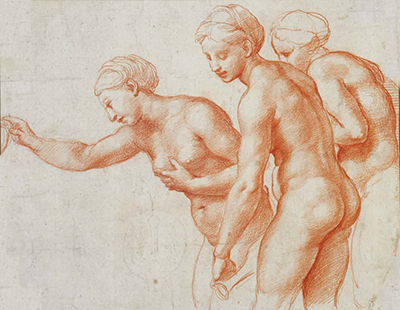This detailed, multi-figure red chalk drawing prepared Raphael for one of his most famous paintings
The Three Graces displays Raphael's talents as a painter, but much work went into the preparation that included several chalk drawings.
The use of red chalk was frequent during the High Renaissance - see also Da Vinci's Self Portrait and also Michelangelo's Madonna del Silenzio.
The Villa Farnesina Loggia is believed to be the host of this particular drawing, with most of Raphael's art now spread right across Europe and North America. It is believed that the artist used red chalk specifically because of its ability to mimic the human body more accurately than other drawing mediums.
The angle and postures of the figures in this study sketch are very different to those used in the final oil on panel. Perhaps there were several other study pieces too, lost in the years that have followed. Raphael is likely to have tried several different angles for his three graces before commencing the oil work.
The final artwork used apples prominently, but are not used in this sketch which concentrates on capturing the female figure. Greek mythology would use this fruit as a symbol of immortality, whilst Surrealist Rene Magritte famously used it The Son of Man.




